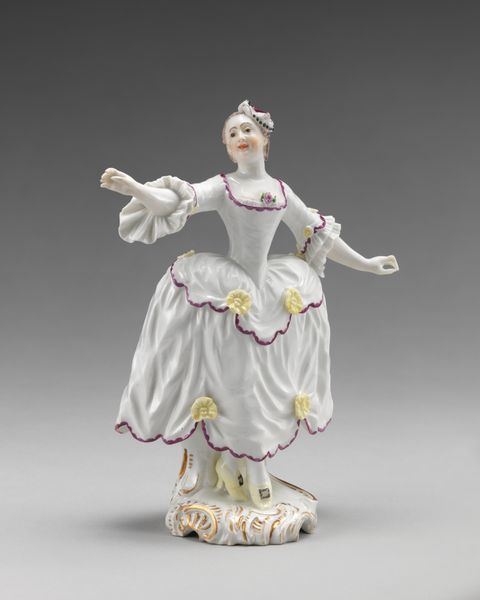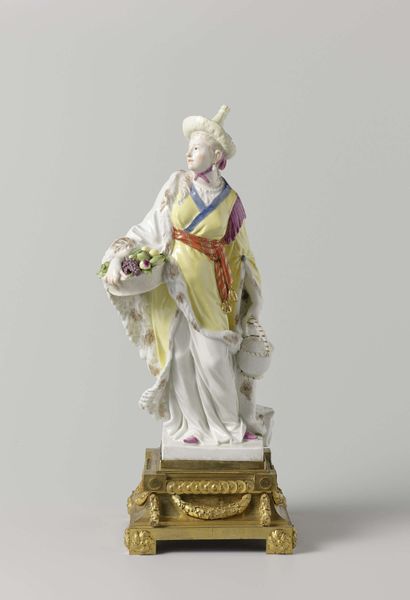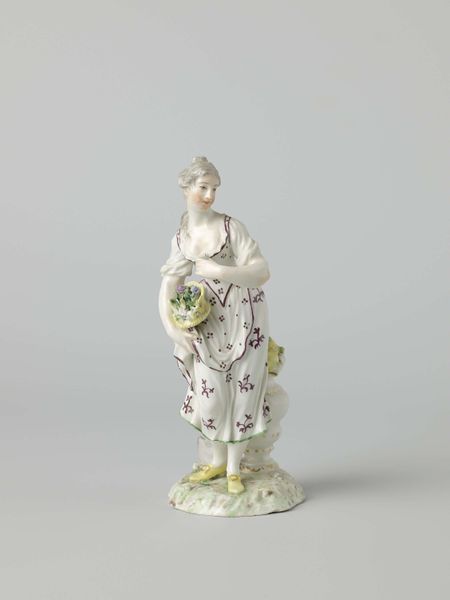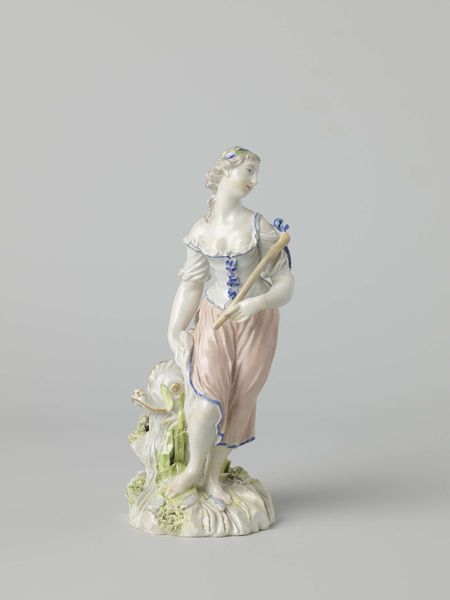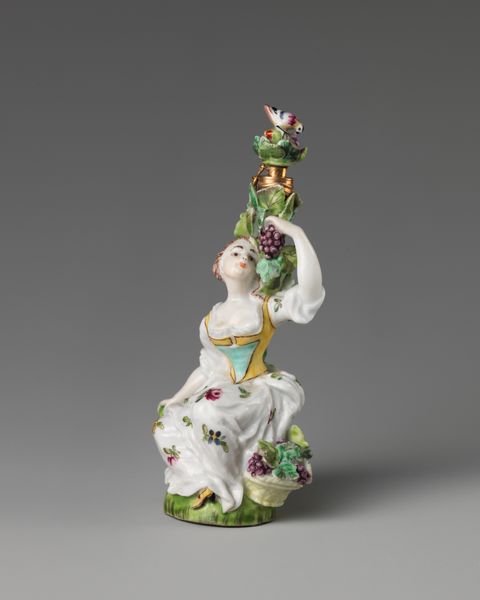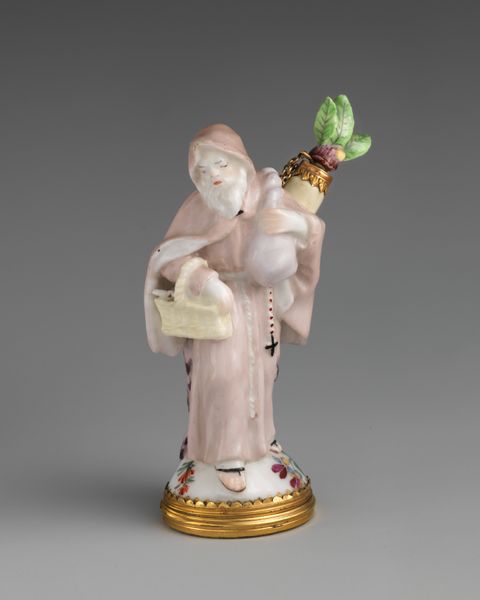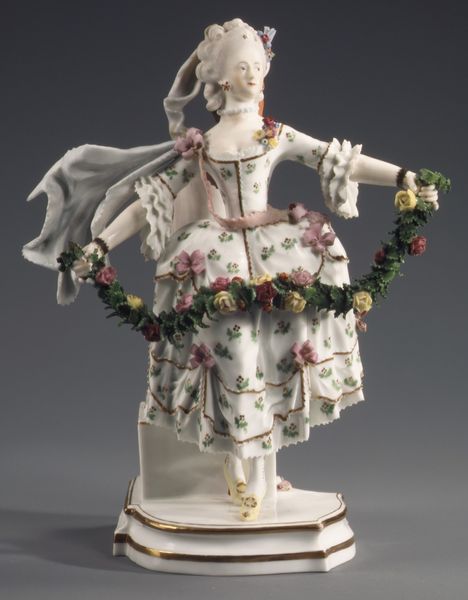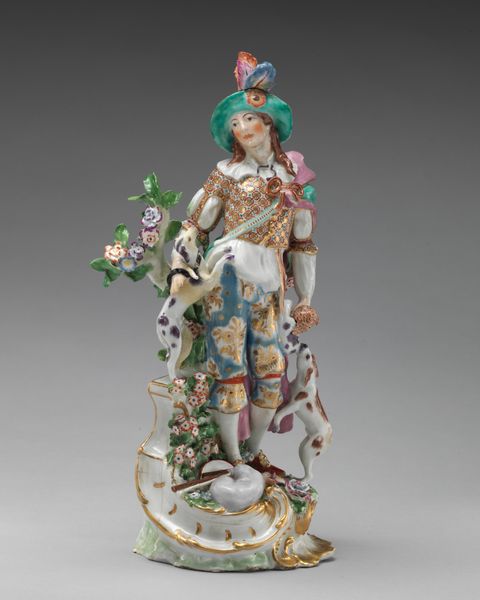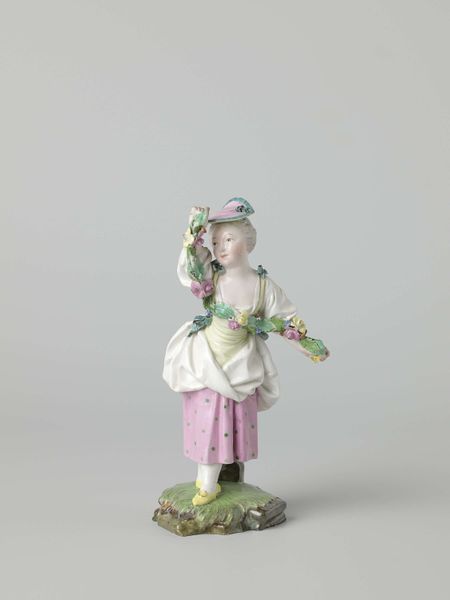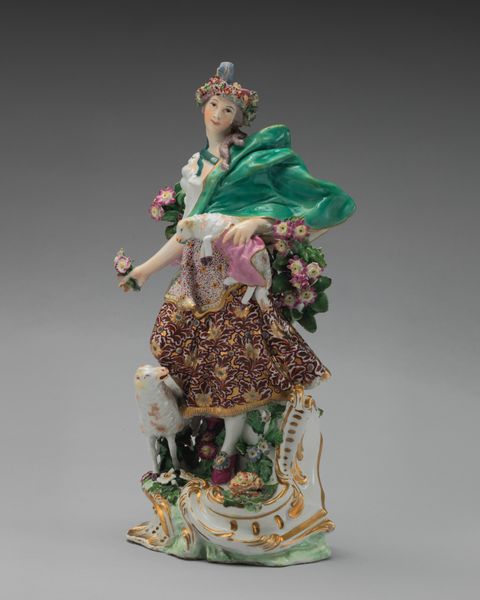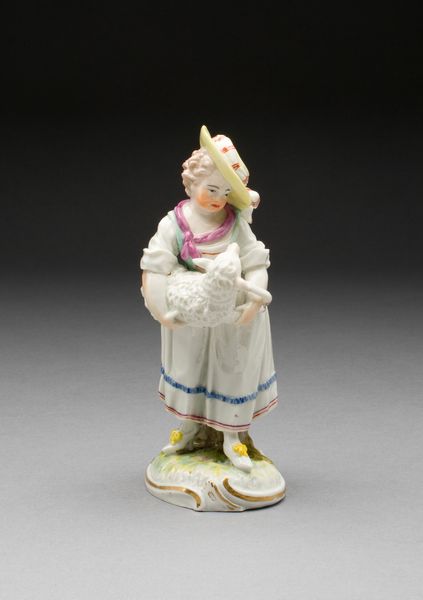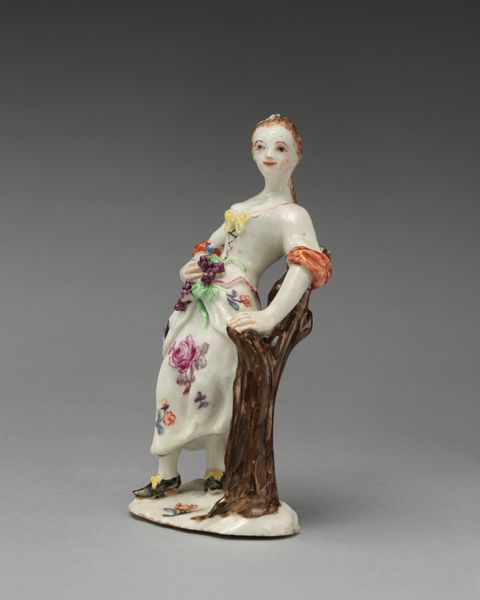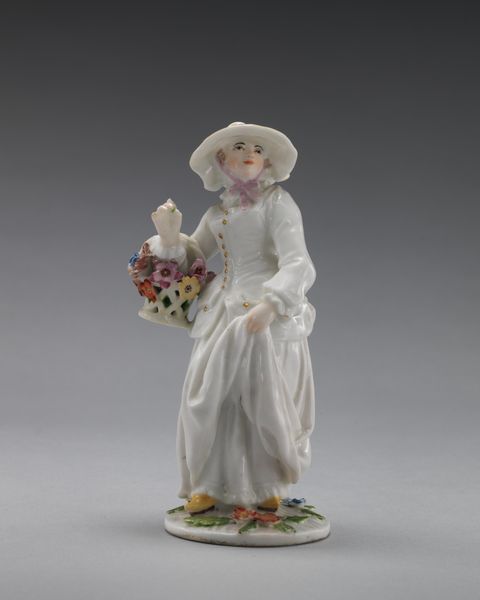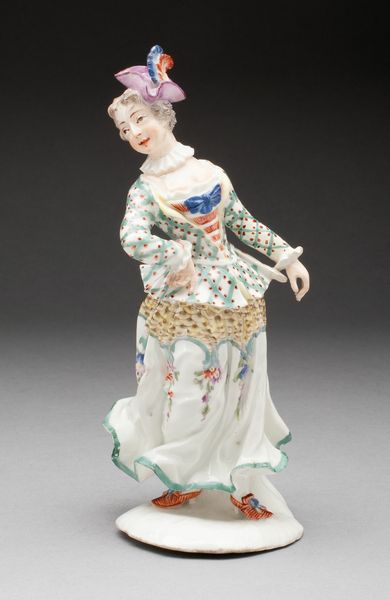
porcelain, sculpture
#
allegory
#
porcelain
#
figuration
#
sculpture
#
rococo
Dimensions: height 17.5 cm, width 9.3 cm, depth 8.6 cm
Copyright: Rijks Museum: Open Domain
Curator: We're looking at a delicate porcelain sculpture here at the Rijksmuseum entitled "Figure representing September." It was crafted by the Porzellanmanufaktur Frankenthal around 1762 to 1765. What’s your first impression? Editor: Lightness, definitely. The pale lilac and cream hues give it an ethereal quality. It almost feels like she could float away. And grapes—lots and lots of grapes. Curator: The grapes are certainly a key symbol. As September, she is linked to the harvest, specifically of grapes. Her attire is more classical than specifically autumnal. Editor: Right, she carries those attributes like trophies almost. I see the symbolic connection, but I wonder how much it resonated with its original audience, removed from agricultural labor by class and the urban environment. Is she a nostalgic ideal? Curator: Possibly, yes. Representations like these become more prevalent as societal structures change. The Roman styling—the drapery, her sandals—it gives a sense of historical precedent and imbues the allegory with cultural weight. Remember, porcelain figurines like these were popular amongst the elite; they were luxury items reflecting a particular worldview. Editor: Do you think this type of aesthetic served a purpose within the social hierarchies of the time, reinforcing power through beauty and myth? Curator: Absolutely. Allegorical representations of months and seasons weren't merely decorative, they were ideological. The mastery of porcelain production itself spoke of technological prowess and economic strength. This connects to power, privilege, and the ability to shape perceptions. This figurine acts almost as a silent ambassador. Editor: It is intriguing how a seemingly decorative object could carry such layered meanings, and such heavy cultural implications. The figure feels disconnected from today, a frozen moment representing an idyllic harvest long removed from contemporary concerns, yet resonant with timeless symbols. Curator: And there is a strong psychology behind how these images were received, perpetuating cultural ideals and value systems, even subconsciously.
Comments
No comments
Be the first to comment and join the conversation on the ultimate creative platform.
